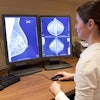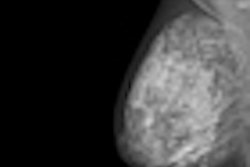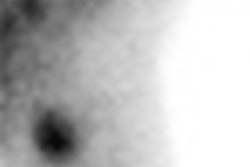Recent studies have documented a drop in mammography screening rates in the U.S., but the trend doesn't appear to extend to women in the Medicare system. These women experienced rising rates of screening mammography from 2004 to 2009, according to researchers from Thomas Jefferson University.
Researchers found that screening mammography grew at an annual rate greater than 1% during the five-year study period, although diagnostic mammography procedures fell at almost a similar rate. The difference is most likely due to changes in coding techniques, said the study team, which included lead author Dr. Jessica Kobil and colleagues Dr. David C. Levin; Laurence Parker, PhD; and Dr. Vijay Rao. Kobil presented the findings at the RSNA 2011 meeting.
The study also documented strong growth in breast ultrasound and breast MRI among Medicare beneficiaries, as well as the ongoing shift to digital mammography, an indication of the rising prominence of these technologies.
Closely watched
Mammography screening rates are closely watched by both breast imaging professionals and public health advocates as a barometer of women's access to preventive care that could save lives and avoid more expensive treatment in the future by finding disease earlier. In an ominous sign, a study in 2009 found that mammography screening rates among the general U.S. population declined at a 2% annual rate between 2000 and 2008.
To analyze changes specifically in the Medicare system, Kobil's team used data from the Medicare Physician/Supplier Procedure Summary Master Files, selecting CPT-4 codes for screening mammography, diagnostic mammography, breast MRI, and breast ultrasound.
(The study period ended in 2009, the year that the U.S. Preventive Services Task Force changed its recommendation that women in their 50s receive regular screening. Mammography experts have speculated that the change could negatively affect mammography screening rates.)
The Thomas Jefferson researchers tabulated global and professional component claims using procedure volume counts, and they calculated utilization rates per 1,000 female beneficiaries by dividing volume counts by the number of thousands of Medicare women beneficiaries for each year.
The group discovered that per 1,000 Medicare beneficiaries:
- Overall rates for screening mammography increased from 301 in 2004 to 322.5 in 2009, representing annual growth of 1.4%.
- Diagnostic mammography rates decreased from 96.5 in 2004 to 91.5 in 2009, representing annual change of -1.1%.
- Breast ultrasound rates increased from 34.3 in 2004 to 43.1 in 2009, representing annual growth of 4.7%.
- Breast MRI rates increased from 0.9 in 2004 to 3.9 in 2009, representing annual growth of 33.9%.
As for the percentage of exams that were performed on digital equipment, Kobil's team found that by 2009, 69.9% of all screening mammograms and 72.1% of all diagnostic mammograms were digital. The study also found that there were 3.5 times as many screening as diagnostic mammograms by 2009.
Levin postulated that some of the increase in screening mammography rates could be due to changes in coding habits at breast centers.
"Some of the [increase of screening mammography and decrease of diagnostic exams] may be a residual coding issue," Levin told AuntMinnie.com. "Years ago, too many studies were being coded as diagnostic that were really screening. As time has passed [radiologists have] realized they need to be more careful."
The utilization rate of breast ultrasound is rising, and by 2009, there were almost half as many US exams performed per 1,000 women as diagnostic mammograms, the study found. Levin suggested that this boost could be due to an increasing awareness of the risk of missing cancer in women with dense breast tissue.
"Breast ultrasound has gone up rapidly, about 5% per year," he said. "And yes, perhaps it's because some states have requirements for notification of breast density. But in general, mammographers are more concerned about the possibility of missing lesions due to [mammography's performance with dense breast tissue]. More breast imagers are probably saying, 'These are dense breasts, and we can't [necessarily find lesions with mammography], so let's go ahead and do an ultrasound.' "
Finally, the study showed that use of breast MRI is growing, although it's still less than 10% of ultrasound use. But it will grow, Levin said.
"It will be interesting to see what happens with breast MRI," Levin said. "Its rates of use are still pretty low, there's still a financial barrier, and not that many people know how to do it well. But I have no doubt [breast MRI use] is going to grow."




















